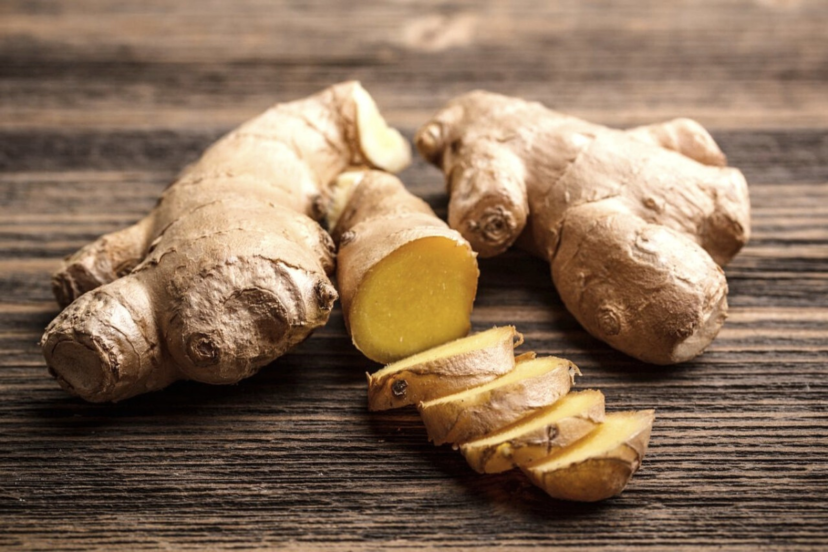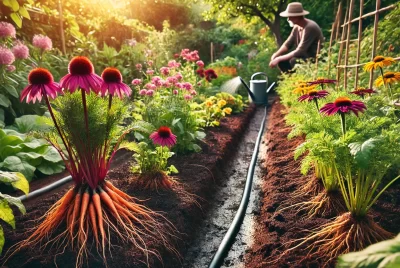Hydroponic Ginger: A Complete Guide
Hydroponic ginger is revolutionizing the way we think about farming this versatile and flavorful root. Imagine cultivating ginger without the need for expansive fields or even soil! That’s the magic of hydroponics, a method where plants are grown in a nutrient-rich water solution. In this guide, we’ll dive into how you can grow ginger hydroponically, exploring the challenges and benefits of this innovative approach.
Introduction to Hydroponic Ginger Cultivation
Hydroponics, at its core, is about growing plants in a soil-less environment. It’s an incredible solution for growing ginger, especially in areas where soil quality is poor or space is limited. By growing ginger hydroponically, farmers and gardeners can achieve higher yields and faster growth, all while using fewer resources like water and land. However, it’s not all smooth sailing; mastering hydroponic ginger cultivation requires understanding the right techniques and overcoming specific challenges.
What is Hydroponics?
Hydroponics is a method of growing plants without soil, using mineral nutrient solutions in an aqueous solvent. Plants’ roots are submerged in this nutrient-rich solution, which provides them with all the essential elements they need to grow. This method allows for precise control over the nutrients and environment, leading to healthier and faster-growing plants.
Why Choose Hydroponics for Ginger?
Ginger is known for its long growing season and specific soil requirements, which can be a challenge in traditional farming. Hydroponics addresses these challenges head-on. Here’s why hydroponic ginger is a game-changer:
Controlled Environment: You have complete control over the climate, which means no worries about unpredictable weather.
Space Efficiency: Hydroponics requires less space than traditional farming, making it ideal for urban settings or small gardens.
Higher Yields: With optimal conditions, ginger can grow more robustly, leading to higher yields.
Water Conservation: Hydroponics uses significantly less water compared to traditional soil farming, making it a more sustainable option.
Understanding the Basics of Hydroponic Systems
Before diving into hydroponic ginger cultivation, it’s crucial to understand the various types of hydroponic systems. Each has its benefits and suitability for different plants and environments.
Types of Hydroponic Systems
Water Culture Systems:
These are perfect for plants that thrive in a lot of water. The roots are directly submerged in the nutrient solution.
Ebb and Flow Systems:
These systems periodically flood the root system with nutrient solution and then drain it away. It’s great for plants that need dry periods.
Drip Systems:
Here, the nutrient solution is delivered to each plant through a drip. It’s a versatile system suitable for a range of plants, including ginger.
Choosing the Right System for Ginger
Selecting the right hydroponic system for ginger is critical. Ginger prefers a moist environment but also needs a dry period to prevent root rot. An ebb and flow system or a carefully managed drip system can be ideal for meeting these needs.
Preparing for Hydroponic Ginger Cultivation
Preparation is key when it comes to successful hydroponic ginger cultivation. Let’s break down the steps to get you started.
Selecting Ginger Varieties
Not all ginger varieties are created equal, especially in a hydroponic setup. Look for varieties that are known for their robust growth and disease resistance. Some popular choices for hydroponics include the ‘Baby Ginger’ variety due to its smaller size and tender quality.
Seed Preparation and Germination
Starting with healthy and viable ginger rhizomes (commonly referred to as ‘ginger seeds’) is crucial. Select fresh rhizomes with well-developed ‘eyes’ or growth buds. Before planting, soak them in water overnight to encourage germination. Cut the rhizomes into smaller pieces, each with at least one eye. Let these pieces dry for a day or two to form a callous over the cuts, which helps prevent rot.
Nutrient Solutions for Ginger
Ginger requires a well-balanced nutrient solution for optimal growth. A hydroponic solution rich in potassium and phosphorus is ideal. It’s also important to regularly check the pH level of your solution, aiming for a range between 5.5 and 6.5, as this ensures nutrient availability for the ginger.
Managing the Hydroponic Environment
Creating and maintaining the right environment is essential for the growth of hydroponic ginger.
Lighting Requirements
Ginger thrives in partial shade or indirect light. If you’re growing indoors, use grow lights but position them to simulate indirect sunlight. A cycle of 12-14 hours of light per day is sufficient for ginger.
Temperature and Humidity Control
The ideal temperature for hydroponic ginger ranges from 22 to 25 degrees Celsius (72 to 77 degrees Fahrenheit). Ginger also prefers high humidity, around 70-90%. In an indoor setup, use a humidifier to maintain the right humidity levels.
Water and Nutrient Management
Consistent water quality is vital. Change your nutrient solution every two weeks to prevent the buildup of salts and ensure that the ginger has access to fresh nutrients regularly. Monitor the electrical conductivity (EC) of your solution to ensure that the ginger isn’t receiving too much or too little of the nutrients.
Common Challenges and Solutions
Growing ginger hydroponically can come with its set of challenges, but with the right knowledge, these can be easily managed.
Pest and Disease Management
Keep an eye out for common pests like aphids and spider mites. Regularly inspect your ginger plants and use organic pest control methods if needed. Diseases like root rot can occur due to over-watering or poor air circulation. Ensure your system allows for proper drainage and aeration.
Nutrient Deficiencies and Toxicities
Yellowing leaves can indicate a nutrient deficiency, often a lack of nitrogen. On the other hand, brown leaf tips might suggest nutrient burn, often from too much fertilizer. Regularly testing your nutrient solution and adjusting as needed can prevent these issues.
Harvesting and Post-Harvest Processing
The moment of truth in hydroponic ginger cultivation is the harvest. Ginger typically takes about 8-10 months to mature in a hydroponic system.
When and How to Harvest Hydroponic Ginger
You’ll know your ginger is ready to harvest when the leaves begin to yellow and die back. Carefully remove the ginger rhizomes from the system. They should be plump, firm, and have a spicy aroma.
Post-Harvest Handling and Storage
Once harvested, wash the ginger rhizomes gently and let them air dry. Store them in a cool, dry place. For long-term storage, ginger can be refrigerated or even frozen.
The Future of Hydroponic Ginger Cultivation
As we look ahead, the future of hydroponic ginger cultivation is bright, with continuous innovations shaping the way we grow this spice.
Innovations and Trends in Hydroponics
Technological advancements in hydroponics, such as automated nutrient delivery systems and AI-driven climate control, are making it easier and more efficient to grow ginger. These innovations not only enhance growth rates but also improve the sustainability of hydroponic systems.
Sustainability and Environmental Impact
Hydroponic ginger cultivation stands out as a sustainable agricultural practice. It uses less water and land compared to traditional farming, and its controlled environment reduces the need for chemical pesticides. This method holds great promise for environmentally conscious farming and food security.
Conclusion: The Potential of Hydroponic Ginger
In wrapping up, hydroponic ginger presents an exciting frontier in modern agriculture. From the controlled cultivation environment and high-efficiency use of resources to the challenges and solutions in managing a hydroponic system, it’s clear that this method offers numerous benefits.
By embracing hydroponic techniques, we can grow ginger in various settings, even in places where traditional farming is not feasible. This method ensures a consistent supply of fresh ginger, which is essential for both culinary and medicinal purposes. Moreover, the sustainability aspect of hydroponic ginger cultivation aligns with the growing global emphasis on environmentally friendly farming practices.
As technology advances, we can expect hydroponic ginger farming to become even more accessible and efficient. Whether you’re a hobbyist looking to grow ginger at home or a commercial farmer seeking to expand your crop repertoire, hydroponic ginger cultivation offers a viable and rewarding path.
In conclusion, hydroponic ginger is not just about growing a spice; it’s about embracing innovation, sustainability, and efficiency in agriculture. As we continue to face global challenges like climate change and food security, hydroponic ginger stands out as a symbol of adaptability and resilience in our ever-evolving relationship with nature and food production.
Frequently Asked Questions (FAQs) About Hydroponic Ginger
1. Is hydroponic ginger more productive than traditional soil cultivation?
Yes, hydroponic ginger tends to be more productive than traditional soil cultivation. With precise control over nutrient delivery and environmental conditions, hydroponic systems can lead to faster growth and higher yields.
2. What ginger varieties are best suited for hydroponic cultivation?
Ginger varieties like ‘Baby Ginger’ are well-suited for hydroponic cultivation due to their smaller size and tender quality. Varieties known for robust growth and disease resistance are ideal choices.
3. How do I prevent nutrient deficiencies or toxicities when growing hydroponic ginger?
To prevent nutrient issues, regularly monitor the nutrient solution’s pH and electrical conductivity (EC). Adjust the solution as needed to maintain the right balance of nutrients. Yellowing leaves can indicate a deficiency, while brown leaf tips may suggest nutrient burn.
4. Can I grow hydroponic ginger indoors, and what kind of lighting does it need?
Yes, you can grow hydroponic ginger indoors. Ginger prefers partial shade or indirect light. Indoor growers can use grow lights positioned to simulate indirect sunlight, providing a cycle of 12-14 hours of light per day.
5. What is the typical harvesting time for hydroponic ginger, and how should I store it?
Hydroponic ginger usually takes about 8-10 months to mature. Harvest it when the leaves start to yellow and die back. After harvesting, wash the ginger rhizomes gently and air dry them. For long-term storage, refrigeration or freezing is recommended.




